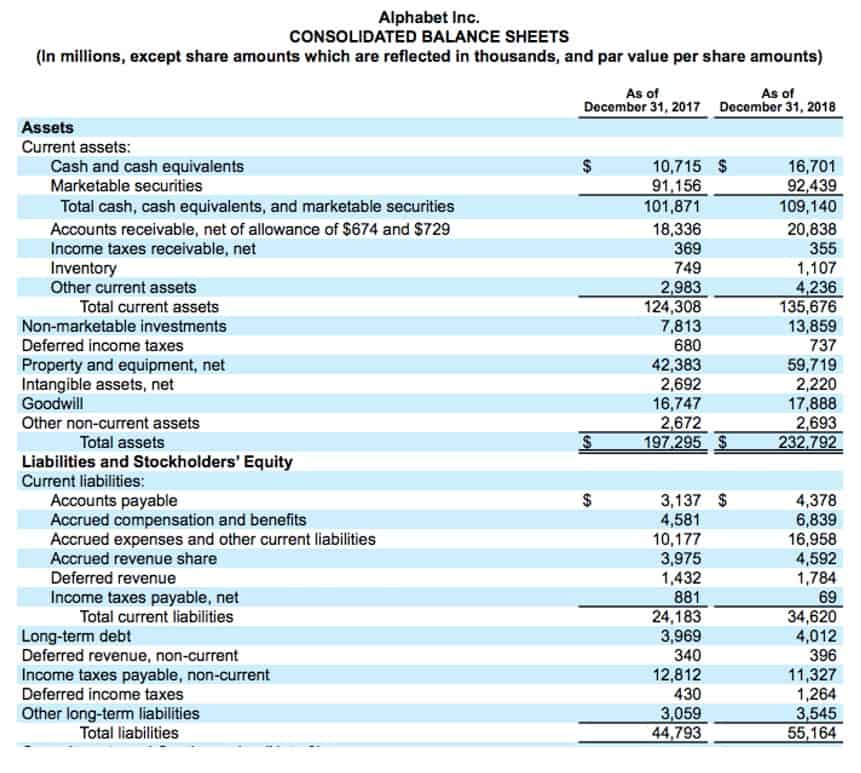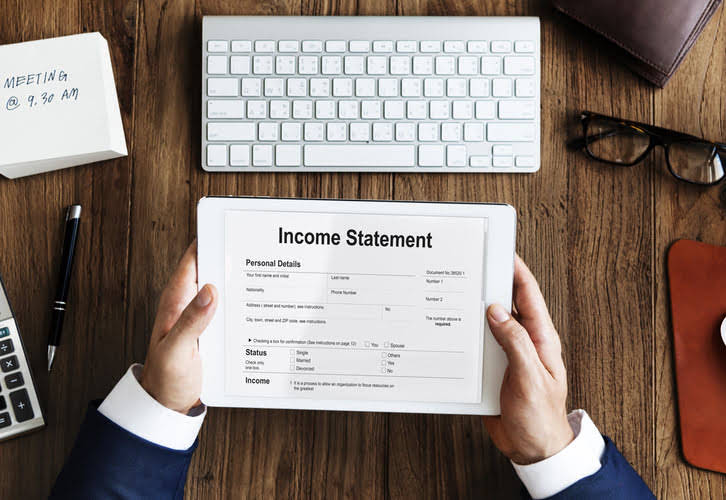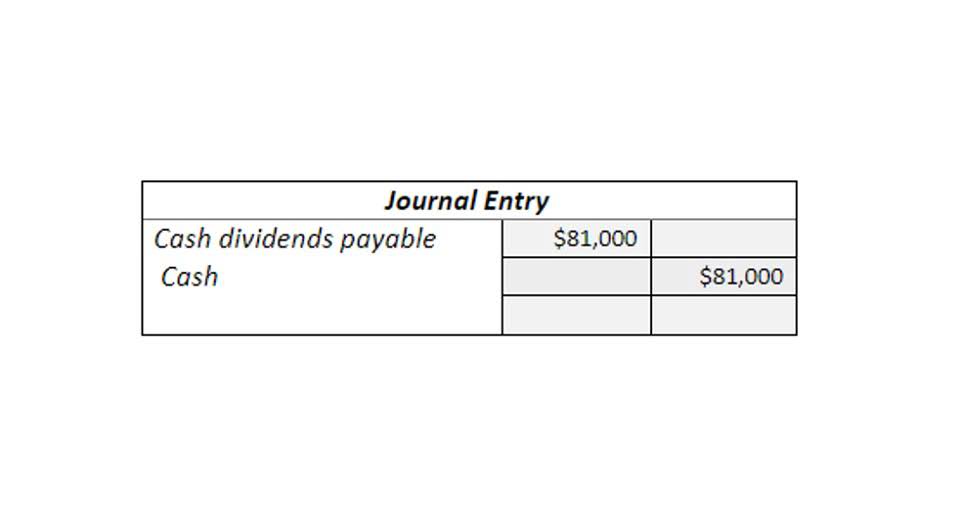Balance sheets are typically prepared and distributed monthly or quarterly depending on the governing laws and company policies. Additionally, the balance sheet may be prepared according to GAAP or IFRS standards based on the region in which the company is located. The major and often largest value assets of most companies are that company’s machinery, buildings, and property. If we rearrange the Accounting Equation, Equity is equal to Assets minus Liabilities.
How Does the Accounting Equation Differ from the Working Capital Formula?
It’s a snapshot of a company’s financial position, as broken down into assets, liabilities, and equity. Balance sheets serve two very different purposes depending on the audience reviewing them. The accounting method under which revenues are recognized on the income statement when they are earned (rather than when the cash is received). Balance sheets allow the user to get an at-a-glance view of the assets and liabilities of the company.
What are the three elements of the accounting equation?
A balance sheet is one of the primary statements used to determine the net worth of a company and get a quick overview of its financial health. The ability to read and understand a balance sheet is a crucial skill for anyone involved in business, but it’s one that many people lack. Changes in balance sheet accounts are also used to calculate cash flow in the cash flow statement. For example, a positive change in plant, property, and equipment is equal to capital expenditure minus depreciation expense.
An intuitive version of the accounting formula
Under the double-entry accounting system, each recorded financial transaction results in adjustments to a minimum of two different accounts. The process of recording these transactions will continue across the period. In reality, a business may have thousands, with each one affecting at least two accounts. The investment by the shareholders is structured as a share issue of 10,000 shares, issued at 5.00 each. The nominal (or par) value is 1.00, and the accounting rules require the par amount to be reported separately from the additional above par. The additional amount above par is reported in an account called additional paid-in capital or share premium.
Solvency and the accounting equation
You can use the Excel file to enter the numbers for any company and gain a deeper understanding of how balance sheets work. In other words, the total amount of all assets will always equal the sum of liabilities and shareholders’ equity. The double-entry practice ensures that the accounting equation always remains balanced, meaning that the left side value of the equation will always match the right side value. The accounting equation is a concise expression of the complex, expanded, and multi-item display of a balance sheet. It can be defined as the total number of dollars that a company would have left if it liquidated all of its assets and paid off all of its liabilities.
We won’t look at the statement of stockholders’ equity (owners of a corporation are called stockholders)—not yet anyway. We will look at that statement more closely in a later module on corporations. You can also check out Huron Consulting Group’s full annual report.
These revenues will be balanced on the assets side, appearing as cash, investments, inventory, or other assets. In short, the balance sheet is a financial statement that provides a snapshot of what a company owns and owes, as well as the amount invested by shareholders. Balance sheets can be used with other important financial statements to conduct fundamental analysis or calculate financial ratios. As such, the balance sheet is divided into two sides (or sections).
Additional paid-in capital or capital surplus represents the amount shareholders have invested in excess of the common or preferred stock accounts, which are based on par value rather than market price. Shareholder equity is not directly related to a company’s market capitalization. The latter is based on the current price of a stock, while paid-in capital is the sum of the equity that has been purchased at any price. That’s because a company has to pay for all the things it owns (assets) by either borrowing money (taking on liabilities) or taking it from investors (issuing shareholder equity). The most liquid of all assets, cash, appears on the first line of the balance sheet.
In our examples below, we show how a given transaction affects the accounting equation. We also show how the same transaction affects specific accounts by providing the journal entry that is used to record the transaction in the company’s general ledger. Owner’s or stockholders’ equity also reports the amounts invested into the company by the owners plus the cumulative net income of the company that has not been withdrawn or distributed to the owners. When analyzed over time or comparatively against competing companies, managers can better understand ways to improve the financial health of a company. The left side of the balance sheet is the business itself, including the buildings, inventory for sale, and cash from selling goods. If you were to take a clipboard and record everything you found in a company, you would end up with a list that looks remarkably like the left side of the balance sheet.
This account includes the amortized amount of any bonds the company has issued. Over 1.8 million professionals use CFI to learn accounting, financial analysis, modeling and more. Start with a free account to explore 20+ always-free courses and hundreds of finance templates and cheat sheets.
The balance sheet provides an overview of the state of a company’s finances at a moment in time. It cannot give a sense of the trends playing out over a longer period on its own. For this reason, the balance sheet should be compared with those of previous periods. We accept payments via credit card, wire transfer, Western Union, and (when available) bank loan.
The accounting equation is based on the premise that the sum of a company’s assets is equal to its total liabilities and shareholders’ equity. As a core concept in modern accounting, this provides the basis for keeping a company’s books balanced across a given accounting cycle. For all recorded transactions, if the total debits and credits for a transaction are equal, then the result is that the company’s assets are equal to the sum of its liabilities and equity. Accountants use the language of debits and credits to describe the recording of transactions, but it is more important to understand how they impact assets, liabilities and equity.
The example above complies with International Financial Reporting Standards (IFRS), which companies outside the United States follow. In this balance sheet, accounts are listed from least liquid to most liquid (or how quickly they can be converted into cash). Owners’ equity, also known as shareholders’ equity, typically refers to anything that belongs to the owners of a business after any liabilities are accounted for.
In this form, it is easier to highlight the relationship between shareholder’s equity and debt (liabilities). As you can see, shareholder’s equity is the remainder after liabilities have been subtracted from assets. This is because creditors – parties that lend money such as banks – have the first claim to a company’s assets. For example, an increase in an asset account can be matched by an equal increase to a related liability or shareholder’s equity account such that the accounting equation stays in balance.
Cash (an asset) rises by $10M, and Share Capital (an equity account) rises by $10M, balancing out the balance sheet. Accounts Payables, or AP, is the amount a company owes suppliers for items or services purchased on credit. As the company pays off its AP, it decreases along with an equal amount decrease to the cash account. This line item includes all of the company’s intangible fixed assets, which may or may not be identifiable. Identifiable intangible assets include patents, licenses, and secret formulas.
This account may or may not be lumped together with the above account, Current Debt. While they may seem similar, the current portion of long-term debt is specifically the portion due within this year of a piece of debt that has a maturity of more than one year. For example, if a company takes on a bank loan to be paid off in 5-years, this account will include the portion of that loan due in the next year.
Different accounting systems and ways of dealing with depreciation and inventories will also change the figures posted to a balance sheet. Because of this, managers have some ability to game the numbers to look more favorable. Pay attention to the balance sheet’s footnotes in order to determine which systems are being used in their accounting and to look out for red flags. Each category consists of several smaller accounts that break down the specifics of a company’s finances. These accounts vary widely by industry, and the same terms can have different implications depending on the nature of the business. But there are a few common components that investors are likely to come across.
This transaction affects only the assets of the equation; therefore there is no corresponding effect in liabilities or shareholder’s equity on the right side of the equation. This is the total amount of net income the company decides to keep. Every period, a company may pay out dividends from its net income. Any amount remaining (or exceeding) is added to (deducted from) retained earnings. The assets are the operational side of the company, basically a list of what the company owns.
The balance sheet is just a more detailed version of the fundamental accounting equation—also known as the balance sheet formula—which includes assets, liabilities, and shareholders’ equity. The fundamental accounting equation, as mentioned earlier, states that total assets are equal to the sum of the total liabilities and total shareholders equity. This financial statement lists everything a company owns and all of its debt.
In this example, Apple’s total assets of $323.8 billion is segregated towards the top of the report. This asset section is broken into current assets and non-current assets, and each of these categories is broken into more specific accounts. A brief review of Apple’s assets shows that their cash on hand decreased, yet their non-current assets increased. The income statement and statement of cash flows also provide valuable context for assessing a company’s finances, as do any notes or addenda in an earnings report that might refer back to the balance sheet.
Debt is a type of liability and is generally the most dangerous type. They can be a vital part of a company’s operations, in both day-to-day business and long-term plans. Of that amount, Nick owes $2,800 to a creditor and his independent contractors, leaving him $17,350 in equity.
- For small privately-held businesses, the balance sheet might be prepared by the owner or by a company bookkeeper.
- They consist, predominantly, of short-term debt repayments, payments to suppliers, and monthly operational costs (rent, electricity, accruals) that are known in advance.
- With an understanding of each of these terms, let’s take another look at the accounting equation.
- On a more granular level, the fundamentals of financial accounting can shed light on the performance of individual departments, teams, and projects.
- Without context, a comparative point, knowledge of its previous cash balance, and an understanding of industry operating demands, knowing how much cash on hand a company has yields limited value.
The left side of the balance sheet outlines all of a company’s assets. On the right side, the balance sheet outlines the company’s liabilities and shareholders’ equity. All this information is summarized on the balance sheet, one of the three main financial statements (along with income statements and cash flow statements). Equity refers to the owner’s value in an asset or group of assets. Equity is also referred to as net worth or capital and shareholders equity. The fundamental accounting equation, also called the balance sheet equation, is the foundation for the double-entry bookkeeping system and the cornerstone of the entire accounting science.
If the net amount is a negative amount, it is referred to as a net loss. To make the Accounting Equation topic even easier to understand, we created a collection of premium materials called AccountingCoach PRO. Our PRO users get lifetime access to our accounting equation visual tutorial, cheat sheet, flashcards, quick test, and more. The image below is an example of a comparative balance sheet of Apple, Inc. This balance sheet compares the financial position of the company as of September 2020 to the financial position of the company from the year prior.
An asset is a resource, controlled by the business, that is expected to provide benefits in the future. Common examples include inventory, account receivables and PP&E (property, plant and equipment). Financial analysis often involves both using or analyzing historic information and forecasting forward-looking financial statements. A thorough understanding of the engineering behind financial statements is essential for a valuation assignment or an M&A transaction. Don’t underestimate the significance of the balance sheet in understanding your business’s financial standing.
Owner contributions and income result in an increase in capital, whereas withdrawals and expenses cause capital to decrease. From the Statement of Stockholders’ Equity, Alphabet’s share repurchases can be seen. Their share repurchases impact both the capital and retained earnings balances. If this balance sheet were from a US company, it would adhere to Generally Accepted https://www.bookkeeping-reviews.com/ Accounting Principles (GAAP), and the order of accounts would be reversed (most liquid to least liquid). By looking at the sample balance sheet below, you can extract vital information about the health of the company being reported on. Just as assets are categorized as current or noncurrent, liabilities are categorized as current liabilities or noncurrent liabilities.
Liabilities and equity make up the right side of the balance sheet and cover the financial side of the company. With liabilities, this is obvious—you owe loans to a bank, or repayment of bonds to holders of debt. Liabilities are listed at the top of the balance sheet because, in case of bankruptcy, they are paid back first before any other funds are given out.
In other words, this equation allows businesses to determine revenue as well as prepare a statement of retained earnings. This then allows them to predict future profit trends and adjust business practices accordingly. Thus, the accounting equation is an essential step in determining company profitability. The term balance sheet refers to a financial statement that reports a company’s assets, liabilities, and shareholder equity at a specific point in time.
Debt is a liability, whether it is a long-term loan or a bill that is due to be paid. Accounts receivable list the amounts of money owed to the company by its customers for the sale of its products. Debits and Credits are the words used to reflect this double-sided nature of financial transactions. For example, imagine that a business’s Total Assets increased by $500.
If the accounting equation is out of balance, that’s a sign that you’ve made a mistake in your accounting, and that you’ve lost track of some of your assets, liabilities, or equity. For a sole proprietorship or partnership, equity is usually called “owners equity” on the balance sheet. Because the Alphabet, Inc. calculation shows that the basic accounting equation is in balance, it’s correct. The monthly trial balance is a listing of account names from the chart of accounts with total account balances or amounts.
Its liabilities (specifically, the long-term debt account) will also increase by $4,000, balancing the two sides of the equation. If the company takes $8,000 from investors, its assets will increase by that amount, as will its shareholder equity. All revenues the company generates in excess of its expenses will go into the shareholder equity account.
Regardless of the size of a company or industry in which it operates, there are many benefits of reading, analyzing, and understanding its balance sheet. Some companies issue preferred stock, which will be listed separately from common stock under this section. Preferred stock is assigned an arbitrary par value (as is common stock, in some cases) that has no bearing on the market value of the shares. The common stock and preferred stock accounts are calculated by multiplying the par value by the number of shares issued.
Net Assets is the term used to describe Assets minus Liabilities. You can think of them as resources that a business controls due to past transactions or events. The accounting engineering records the new asset and the use of cash. You can receive the complete Bookkeeping 101 accounting series in a 23 page E-Book for $4.97 along with all sorts of other accounting, business and financial goodies. Here’s a simplified version of the balance sheet for you and Anne’s business. Right after the bank wires you the money, your cash and your liabilities both go up by $10,000.
Now let’s say you spend $4,000 of your company’s cash on MacBooks. Being an inherently negative term, Michael is not thrilled with this description. Not all companies will pay dividends, repurchase shares, or have accumulated other comprehensive income or loss.
Accounting software is a double-entry accounting system automatically generating the trial balance. The trial balance includes columns with total debit and total credit transactions at the bottom of the report. gift tax return definition This article gives a definition of accounting equation and explains double-entry bookkeeping. We show formulas for how to calculate it as a basic accounting equation and an expanded accounting equation.















